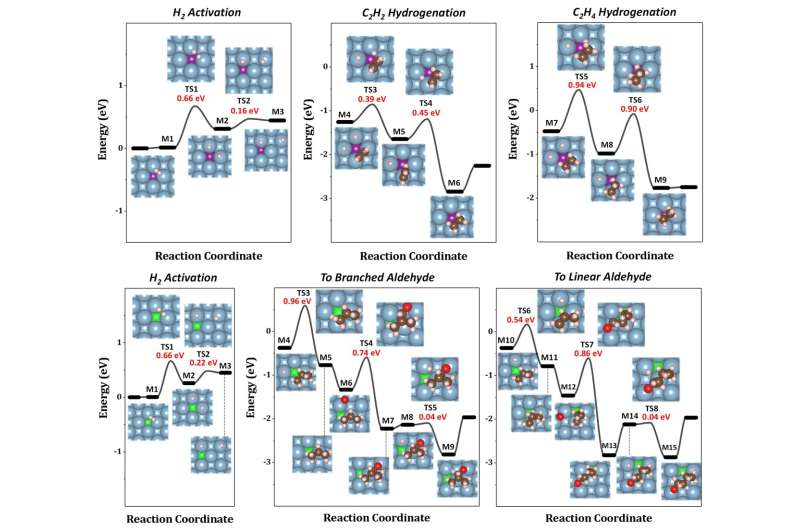This article has been reviewed according to Science X's editorial process and policies. Editors have highlighted the following attributes while ensuring the content's credibility:
fact-checked
trusted source
proofread
Conduction of catalytic properties from buried transitional metals to exposed inert main group metals

The electronic interaction between buried single transitional metal and adjacent aluminum atoms via metallic bonding can be well demonstrated.
Inspired by the disappearance of surface transitional metal species on an aluminum substrate upon annealing, the research group of Zhenpeng Hu (School of Physics, Nankai University) performed density functional (DFT) calculations. Some d-block metals are found to show a self-dispersion and sinking tendency and can be well stabilized in the subsurface region of single-crystal aluminum.
A new study on this topic led by Prof. Landong Li (College of Chemistry, Nankai University), Prof. Zhenpeng Hu, and Prof. Fan Yang (School of Physical Science and Technology, ShanghaiTech University) appears in National Science Review.
According to their calculation results, Landong Li and Fan Yang began to seek solid evidence on the structure of the unique metallic system (M/Al) and the electron transfer between transitional metals and aluminum substrate through scanning tunneling microscopy (STM).
Typically, it is found that both palladium and rhodium exclusively locate in the subsurface region of Al(001) and Al(111) single crystals as isolated atoms, with distinct electron transfer from palladium or rhodium to adjacent aluminum atoms.
The research team then performed DFT predictions on the catalytic properties of M/Al in several important reactions, such as acetylene semi-hydrogenation and propylene hydroformylation. They found that the intrinsic catalytic properties of palladium and rhodium can be conducted to the outermost inert aluminum layer, deriving catalytically active M/Al systems, although palladium and rhodium atoms are completely buried inside aluminum single crystal and inaccessible to reaction substrates.
Guided by theoretical predictions and surface science observations, the team finally built real main group metal systems containing buried transitional metal centers, showing expected catalytic performance in the reactions of alkyne semi-hydrogenation, olefin hydroformylation, and Suzuki-coupling. These results further confirm that the catalytic properties of buried transitional metals can be transferred to the exposed catalytically inert main group metals, i.e., the conductive catalysis.
This concept might provide an efficient shield of the traditional active centers against poisoning or leaching by the conductive layer, in contrast to traditional supported systems. More importantly, it is proposed that the catalytic properties of buried transitional metals can be precisely regulated or completely altered when passing through the conductive layer.
More information: Xin Deng et al, Conductive catalysis by subsurface transition metals, National Science Review (2024). DOI: 10.1093/nsr/nwae015
Provided by Science China Press



















